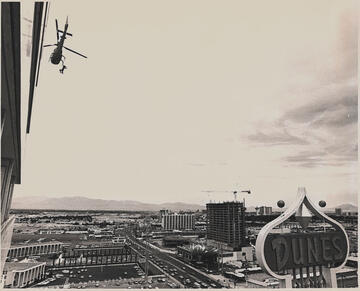
As a child, I relished being in the audience and witnessing the creative energy of artists. On school field trips to the local high school for musical productions, on hot metal bleachers in Wisconsin Dells eating snacks and watching Tommy Bartlett’s Water Show, to later in life, purchasing tickets to see my favorite musician, Chelsea Wolfe, perform around Chicago, I enjoyed artistic witnessing and the small moments of joy and pleasure they afforded me. There are many ways we sustain ourselves and our lives, and the simultaneous creative labor of artists and engagement of the audience is one worthy of historical consideration.
My commitment to these histories of everyday life comes out of my background as a working-class, first-gen student, who is queer and learning disabled, and also from my work as an archivist and librarian, where countless people from all walks of life shared with me their interests, desires, and curiosity.
In the Lied Library, at the new ADA compliant research table (I highly recommend this to every researcher who is disabled, suffers from chronic pain, and/or back pain) I’ve been combing through the LIbraries' Minsky Burlesque Records (MS-00290) and the Dunes Hotel and Casino Records (MS-00328). Sometimes with the generous historian Dr. Larry Gragg sharing with me archival finds related to my research. Or, Dr. Su Kim Chung and Aaron Mayes, making careful, smart, and thoughtful recommendations.
While my two-week fellowship is ending, I’ve worked with many extraordinary materials that I’ve been diligently photographing or scanning and taking notes on. Both the Minsky Burlesque Records and the Dunes Hotel and Casino Records hold AGVA (American Guild of Variety Artists) contracts for dancers and performers, a rare find in records like these. Both collections also contain many fantastic photographs, well-curated assortments of clippings, and important ephemera, such as menus and programs.
Harold Minsky is known for bringing “family-style” burlesque to Las Vegas in the 1950s, most notably at the Dunes Hotel, as his show ran there for many years.
According to Harold Minsky, ‘family-style’ burlesque is “a type of show that wouldn’t offend anybody, man or woman” and is “a happy medium between old-time vaudeville and burlesque.” ["‘Family-Style’ Burlesque Is a Smash Hit in Newark,” New York Herald Tribune, Jan. 31 1954, page D2.]
Minsky emphasizes in this definition the importance of women spectators when he says, “Why 50 percent of our Saturday night crowd are women.” ‘Family-style’ burlesque arrived, and later evolved in Las Vegas, as an artistic and cultural form already shaped by women spectatorship in New Jersey, Chicago, and Miami. My presentation on Friday, May 23, will delve into the significance of women in Sin City audiences during the postwar period.
For those interested in learning more about the history of everyday life, I recommended the late Alf Lüdtke’s scholarship. Particularly: History of Everyday Life: Reconstructing Historical Experience and Ways of Life, edited by Alf Lüdtke, translated by William Templer (Princeton: Princeton University Press, 1995).
Samantha Smith is a Ph.D. student in history at Michigan State University with a specialization in Women’s and Gender Studies. Their research focuses on the histories of nightlife and entertainment in Chicago and Las Vegas during the twentieth-century. They have an MLIS (with a certificate in Archival and Cultural Heritage Resources and Services) from Dominican University and an MA in Public History from Loyola University Chicago.


